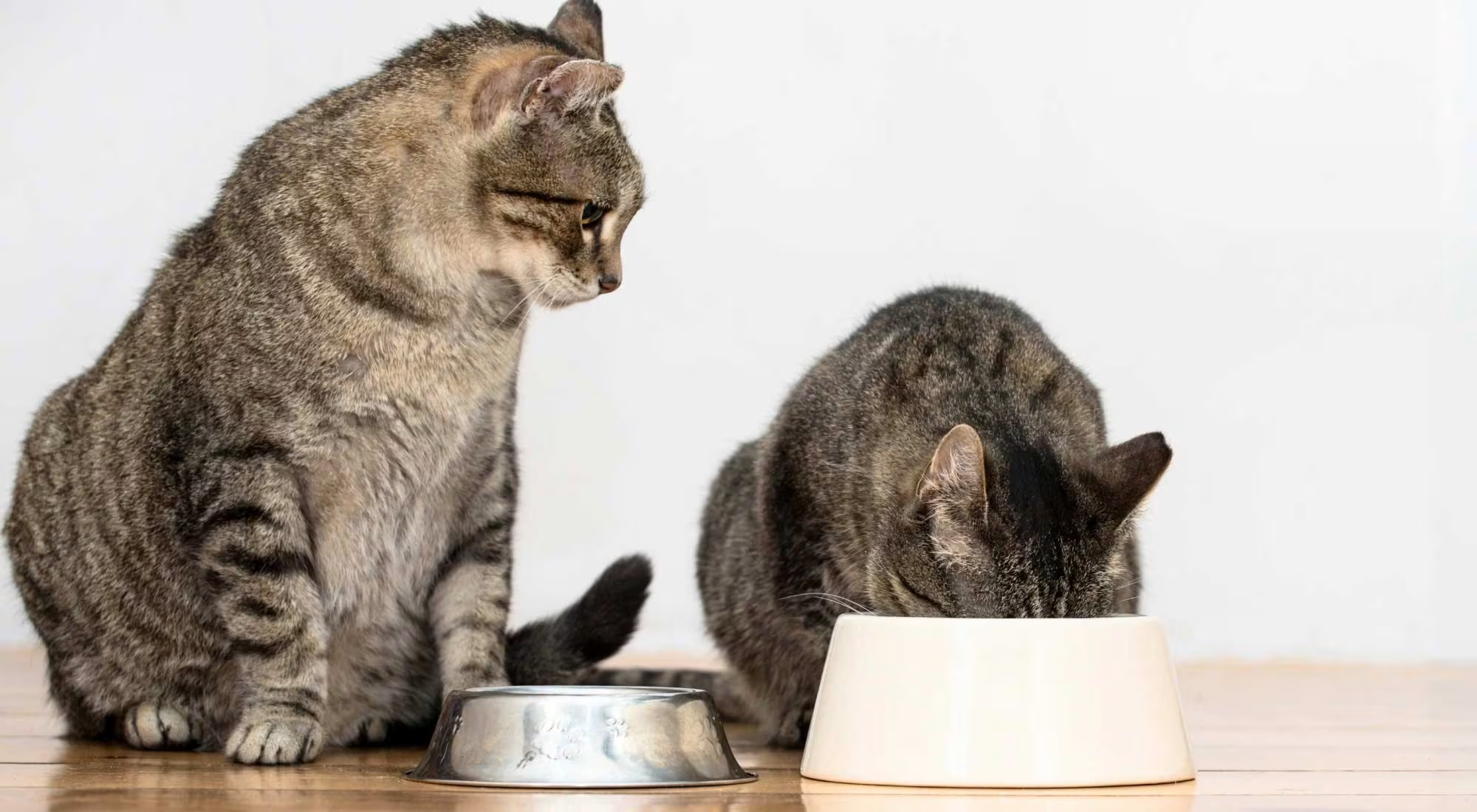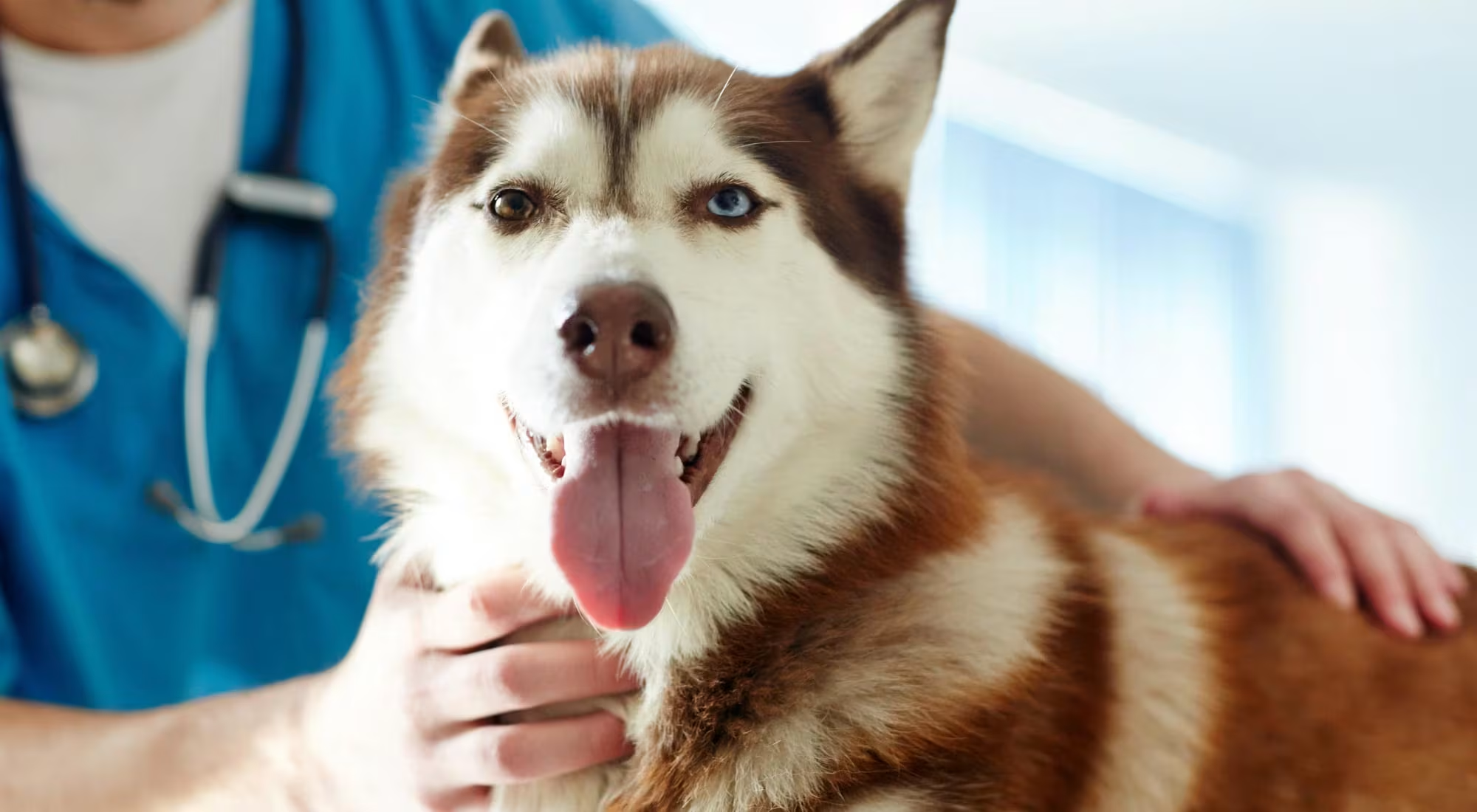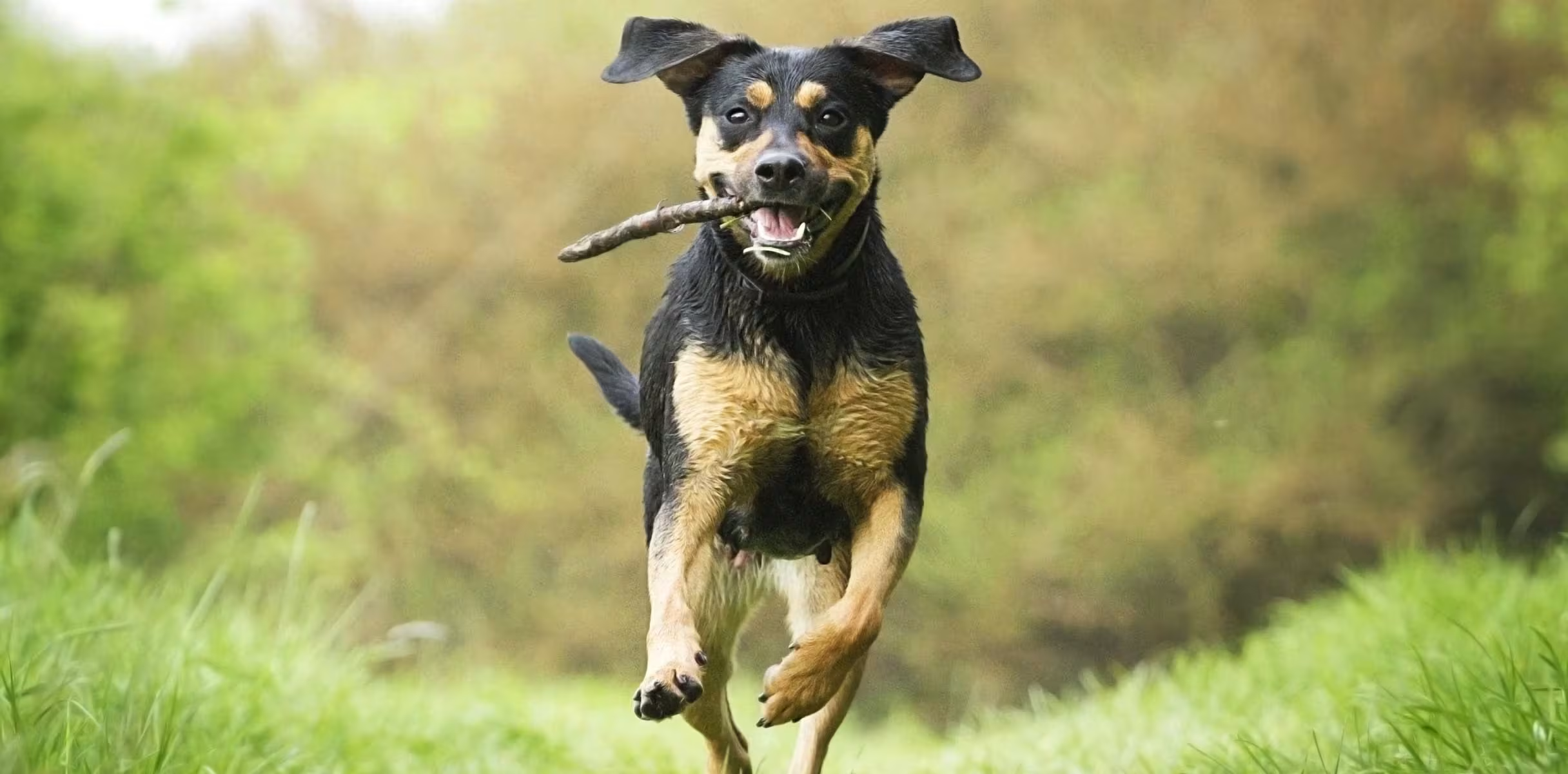The ultimate guide to exercising happiness with your pet in 2025

As one year comes to a close and a new one begins, wishes for health and happiness are exchanged, resolutions made,and goals set. The New Year brings with it the gift of a fresh start. We have the opportunity to hit a mental reset button and adopt new healthy habits or commit to activities that bring us — and our beloved pets — more happiness and joy. Some of us call these New Year’s resolutions, but it isn’t necessary to give them a label. Instead, we like to think of the New Year simply as the chance to set out on a healthier, happier path for ourselves and our animal BFFs.
New Year goals for wellness, happiness, and health
We spoke with veterinarian, Dr. Garrett Schuilenberg, who shared his top three recommendations for improving the health and happiness of your furry family members this year:
1. Watch your pet’s weight
Dr. Schuilenberg’s number one piece of advice for maintaining an animal’s overall wellness is to make sure they’re at a healthy weight. “Maybe it's time to finally get your dog on that diet, or rethink their food, or increase their exercise,” he says, noting the adverse effects that a little bit of extra weight on a cat or dog can have.
2. Get your pet checked by a vet
“It's a new year, your dog or cat is a year older now, so maybe it's time to start doing those annual blood work ups and check ups,” he says. Even if your pet feels fine, Dr. Schuilenberg says a routine blood screen will make sure that everything's okay.
3. Revisit training and obedience
The beginning of a new year is also a great time to revisit training and obedience practice, advises Dr. Schuilenberg. Perhaps there’s something you and your pet have let slip over the past year, or a behaviour that’s having a negative impact on both of you. Even if it’s something as simple as teaching your pet to do a new, seemingly unimportant trick, training is worth adding to your list of goals this year. Not only does obedience practice make your life together better, it’s also a bonding experience that’s mentally engaging and stimulating for your pet.

Why a reset matters
The goals we set for life with our pets generally are rooted in two simple but extremely important things: their health, and their happiness. Addressing these essentials define our job as pet parents.
The New Year is the ideal time to ask ourselves some key questions and reconsider the practices, habits, and routines we have with our animals.
What can we do to make our pet’s lives happier? What can we do to make sure our pets stay healthy? What are some of the things we may have overlooked or haven’t learned yet that could make a difference in their lives?
Taking the time to examine your pet’s diet to make sure it’s nutritionally complete, evaluating how much exercise and engagement they’re getting, making sure their body weight is in check, and visiting the vet for regular checkups all contribute to their overall health — and a healthy pet is a happy one.

A healthy weight is key
Pets of every size, type, and breed have an ideal body weight that is appropriate for them and essential for maintaining good health.
It isn’t always easy to tell if your pet is a healthy weight, though. Different tools like weight calculators and diagrams exist online but to be certain about where your pet stands, the best person to consult is your veterinarian.
Of course weight is relative to size and breed, but in general, animals carrying an extra 10-20% of body fat are considered overweight, and those that carry 20% or more body fat are considered obese.
Overweight and obese pets are susceptible to orthopaedic issues that stem from the extra weight being exerted on their joints. They are also at a higher risk of diabetes, high blood pressure, heart and respiratory disease, kidney disease, and chronic inflammation. In short, weight is critical to a pet’s health.
Make an appointment with your vet to talk about your pet’s weight. Ask what an ideal weight for their breed and size is, and for advice on how to identify whether or not they’re gaining weight.
Your vet can tell you what to look for and offer insight that’s tailored specifically to your pet, while also taking into consideration any additional health conditions they might have.
A conversation about their diet should include a discussion of what type of food your pet eats (is it kibble? raw? canned? a mixture of all of the above?) and how much.
If your vet determines your pet is carrying extra weight, ask if they should be eating a weight-loss formula and whether it should be a commercially available variety — for slight to moderate weight loss — or a vet-prescribed option to address more serious weight problems.
A store-bought raw food diet may also be an option for weight loss, because raw meals can make some animals feel full for longer periods of time.
Meanwhile, if weight maintenance rather than weight loss is the concern, talk to your vet about how your animal’s diet should change as they age, or vary over the course of the year depending on their level of activity. Dogs, for example, may be more active in the summer and require extra food to make up for the extra calories they’re burning.
It’s critical that your pet receive a nutritionally complete diet.
“The food you give your pet needs to have everything that they need,” says Dr. Schuilenberg. “And that's not just looking at it and thinking ‘Oh, there's a green vegetable and there's meat and there's a carb here.
Dr. Schuilenberg says there are very specific nutritional requirements in pet food including macronutrients, and micronutrients.
“Ultimately what I'm getting at here, is that pet food that is made for pets is wellness. It’s stuff that has been tested, stuff that has everything in it. Those are the things that you should be feeding your pet for their entire lifetime,” he says.

Exercise is essential
Exercise, of course, is the other half of the healthy body weight equation. Along with a nutritionally complete and appropriate diet, your pet needs regular exercise (yes, even in the middle of January in Canada).
While getting outdoors in the depth of winter can take some resolve, exercise is key to your pet’s health and happiness. For most dogs, routine walks, runs, hikes, and rambles provide them not only with the required amount of exercise, but mental stimulation and a chance to engage their senses — which is great for their brain health.
If you find it more difficult to get out the door for walks with your pet in the winter, try switching things up by finding new activities to do together. Take your bestie tobogganing, or look into local cross-country ski clubs or opportunities to try snowshoeing. Find a hiking trail you’ve never explored before.
Search the internet for indoor play rooms. Plan a playdate with other pet owners. Hit up a park on the other side of town — just remember to pack a thermos of hot coffee and some extra treats, and coats and boots for your doggo. New adventures can lead to new traditions that you both love.
Great products encourage exercise and inspire happiness
On the days that you are stuck indoors with your pet it’s important to make sure they still get some type of activity. It can be as simple as a game of fetch, a bit of obstacle course training with agility discs, or some independent play with a toy that delivers treats as they chase it around your living room.
Mental exercise for our pets can often be overlooked but it’s an important part of their happiness and well-being. Most of us have experienced a bored or frustrated cat or dog taking out their feelings on a favourite pair of shoes, or an expensive rug.
Keeping them engaged with appropriate toys and products is one way to avoid these situations.
Remember that even the smallest pets appreciate play and the novelty of a new experience.
We offer a range of products that are designed to help small furry or feathered animals exercise and explore, too. A hamster can safely explore inside an exercise ball, while a rabbit will love a new playpen, and some guinea pigs even love being on a harness or leash.
And some pet products are less about play and more about physical wellness.
If you aren’t already looking after your pet’s dental health — either with a toothbrush and toothpaste designed specifically for them, or with dental treats and additives — why not make teeth cleaning part of your 2024 wellness routine? Tooth decay and gum disease can impact a pet’s overall health. The good news is that it’s preventable.
There are also products that will keep your pet safe in certain situations (think: a harness for car rides or a light up collar for night walks). Stop for a moment to consider the lifestyle you share with your pet, and figure out if any of these items will help them have a healthier and happier upcoming year.

Visits to the vet should be a regular thing
Yes, vet visits are important even when your pet is feeling fine. As much as we wish we could talk to our pets and have them answer, our communication gap means we can’t always know how they’re feeling. Regular wellness check ups with a veterinarian can help.
“Regular screening, regular physical exams, regular blood work, even though we think they may be perfectly well,” says Dr. Schuilenberg, will confirm that they truly are in peak health.
“They can't speak to us. My cat can't tell me if every once in a while he feels stomach pain. I'm not going to know that that's happening unless I take him to the vet and someone actually checks.”
Humans get regular physical exams from doctors even when we aren’t feeling unwell and these appointments become even more important as we age — it’s all about prevention.
The same is true for our pets.
Regular vet visits, explains Dr. Schuilenberg, “Means making sure that you're stopping preventable diseases. We're getting our dogs or cats vaccinated on time so that they don't get these terrible yet preventable diseases. Wellness is regular checkups. It's regular diagnostic screenings.”
Wellness checkups help us figure out if pets are a healthy weight, if their joints are bothering them, and if their ear, eye, and dental health is in good shape. Vet visits also present an opportunity to learn what to watch out for based on an animal’s breed or age, as well as discuss their diet and make sure all vaccinations are up to date.
For devoted pet lovers, a visit to the vet is an investment in the health and happiness of your pet — and we can’t think of a better way to start the year.









































